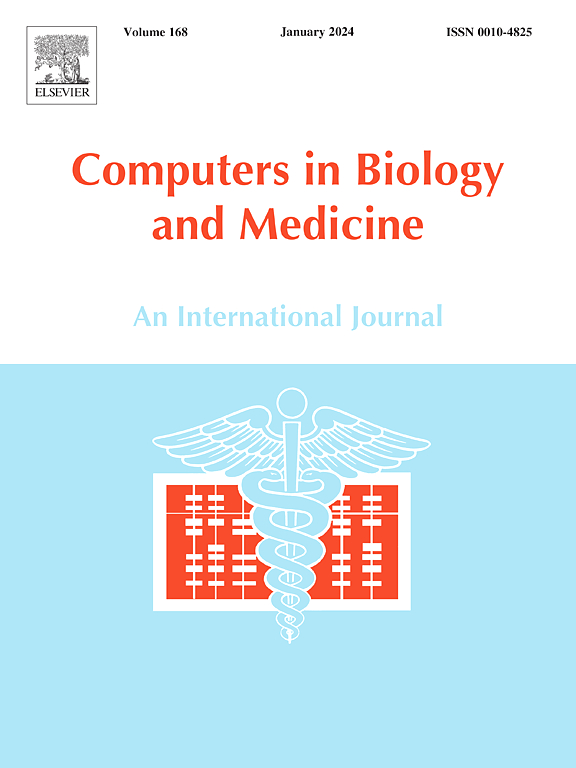整合AI/ML和多组学方法研究TNFRSF10A/TRAILR1及其潜在靶点在胰腺癌中的作用
IF 7
2区 医学
Q1 BIOLOGY
引用次数: 0
摘要
胰腺导管腺癌(PDAC)仍然是最致命的恶性肿瘤之一,尽管目前的治疗方法,5年生存率低于10%。侵袭性肿瘤生物学,限制药物传递和免疫细胞浸润的结缔组织增生基质,以及对细胞凋亡的深刻抵抗,使其治疗更加复杂。在这里,我们描述了一个多层系统生物学和药物发现管道,它集成了大量基因组学,单细胞空间转录组学,蛋白质组学,竞争内源性RNA (ceRNA)网络分析和深度学习驱动的定量结构-活性关系(QSAR)建模。通过实现这一管道,我们预测TNFRSF10A编码TRAILR1死亡受体作为PDAC的潜在治疗靶点。突变和表达分析也证实TNFRSF10A是PDAC的推定靶点。PDAC微环境中的癌细胞表现出异常升高的TNFRSF10A表达。免疫排除的肿瘤壁龛和促生存信号与这种升高的表达有关。使用先进的基于转换器的深度学习方法SELFormer,结合基于QSAR分析的虚拟筛选,我们确定了以前未开发的fda批准的药物和天然化合物,即Temsirolimus,麦角胺和capivasertib,具有潜在的TRAILR1调节作用。在分子动力学模拟中,这些重新利用的候选物对TNFRSF10A的结合亲和力最高,持续时间为300 ns。这些结果显示出良好的结合能(MM-PBSA)、最小RMSD漂移、PCA和SASA。通过空间解析表达模式和动态分子模型,我们提出TNFRSF10A是具有重要治疗意义的PDAC脆弱性。这项研究使用了人工智能实现的化学建模、高通量筛选和多组学方法的新整合,以揭示并从药理学上靶向一种众所周知的耐药癌症的癌症区室特异性弱点。本文章由计算机程序翻译,如有差异,请以英文原文为准。
Integrating AI/ML and multi-omics approaches to investigate the role of TNFRSF10A/TRAILR1 and its potential targets in pancreatic cancer
Pancreatic ductal adenocarcinoma (PDAC) remains one of the most lethal malignancies, with a five-year survival of under 10 % despite current therapies. Aggressive tumor biology, a desmoplastic stroma that limits drug delivery and immune cell infiltration, and profound resistance to apoptosis make it more complex to treat. Here, we describe a multi-layered system biology and drug discovery pipeline that integrates bulk genomics, single-cell spatial transcriptomics, proteomics, competing endogenous RNA (ceRNA) network analysis, and deep learning-driven quantitative structure-activity relationship (QSAR) modeling. By implementing this pipeline, we predicted that TNFRSF10A encodes for the TRAILR1 death receptor as a potential therapeutic target in PDAC. Mutational and expressional analysis also confirmed TNFRSF10A as a putative target in PDAC. Cancer cells within the PDAC microenvironment exhibit aberrantly elevated TNFRSF10A expression. Immune-excluded tumor niches and pro-survival signaling link this elevated expression. Using an advanced transformer-based deep learning approach, SELFormer, combined with QSAR analysis-based virtual screening, we identified previously unexplored FDA-approved drugs and natural compounds, i.e., Temsirolimus, Ergotamine, and capivasertib, with potential TRAILR1 modulatory effects. During molecular dynamics simulations, these repurposed candidates showed the highest binding affinities against TNFRSF10A for 300 ns. These showed favorable binding energies (MM-PBSA), minimal RMSD drift, PCA, and SASA. We propose TNFRSF10A as a therapeutically important PDAC vulnerability nurtured by spatially resolved expression patterns and dynamic molecular modeling. This study has used a novel integration of AI-implemented chemical modeling, high-throughput screening, and a multi-omics approach to unravel and pharmacologically target a cancer compartment-specific weakness in a notoriously drug-resistant cancer.
求助全文
通过发布文献求助,成功后即可免费获取论文全文。
去求助
来源期刊

Computers in biology and medicine
工程技术-工程:生物医学
CiteScore
11.70
自引率
10.40%
发文量
1086
审稿时长
74 days
期刊介绍:
Computers in Biology and Medicine is an international forum for sharing groundbreaking advancements in the use of computers in bioscience and medicine. This journal serves as a medium for communicating essential research, instruction, ideas, and information regarding the rapidly evolving field of computer applications in these domains. By encouraging the exchange of knowledge, we aim to facilitate progress and innovation in the utilization of computers in biology and medicine.
 求助内容:
求助内容: 应助结果提醒方式:
应助结果提醒方式:


